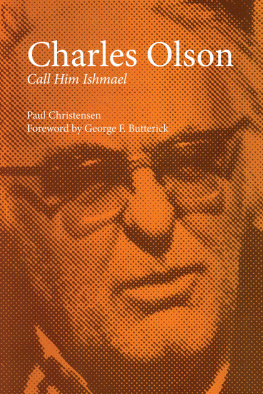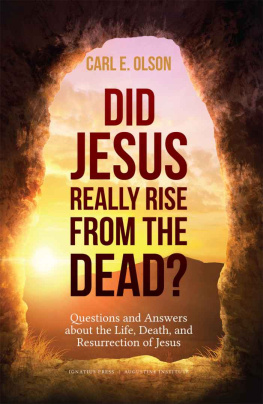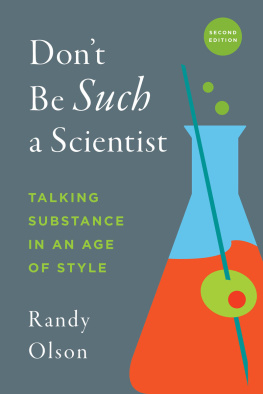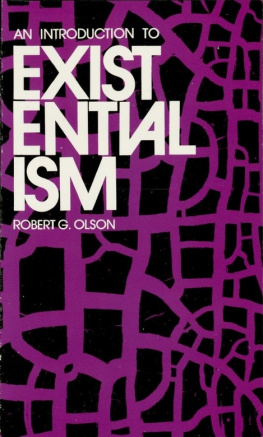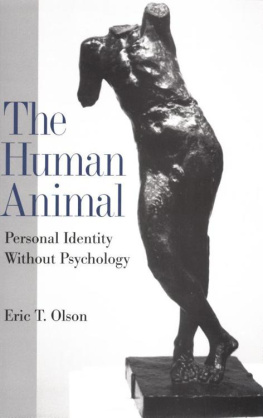Finally Out
Letting Go of Living Straight
LOREN A. OLSON, MD

To my husband, Doug,
for enriching my life in countless ways
and for his sense of humor that forces me to tip generously
And to Whitney, Krista, and Lynn
for their continuing love and support
and for accepting me as good enough
Copyright 2017 by Loren A. Olson MD
All rights reserved. No part of this publication may be reproduced, distributed, or transmitted in any form or by any means, including photocopying, recording, or other electronic or mechanical methods, without the prior written permission of the publisher, except in the case of brief quotations embodied in critical reviews and certain other noncommercial uses permitted by copyright law. For permission requests, write to the publisher, addressed Attention: Permissions Coordinator, at the address below.
Oak Lane Press
2815 100th Street #274
Urbandale, Iowa 50322
Quantity sales. Special discounts are available on quantity purchases by corporations, associations, and others. For details, contact the Special Sales Department at the address above.
Orders by US trade bookstores and wholesalers. Please contact Independent Publishers Group, 814 North Franklin Street, Chicago, IL 60610. Tel: (312) 337-0747; Fax: (312) 337-5985, www.ipgbook.com.
Printed in the United States of America
Cataloging-in-Publication Data
Olson, Loren A., author.
Finally out : letting go of living straight :
/ Loren A. Olson.Revised edition.
pages cm
Includes bibliographical references and index.
LCCN 2016917427
ISBN 978-0-9979614-3-0 (pbk)
ISBN 978-0-9979614-4-7 (ebook)
1. Olson, Loren A. 2. Middle-aged gay menUnited StatesBiography. 3. Coming out (Sexual orientation) 4. Coming out (Sexual orientation)United StatesCase studies. 5. Autobiographies. I. Title.
HQ75.8.O589A3 2017 306.766092
QBI16-900075
Second Edition
21 20 19 18 17 10 9 8 7 6 5 4 3 2 1
Contents
Foreword
JACK DRESCHER, MD
What does it mean to come out as gay? In the mid-1990s, I wrote a professional book to answer that question. My goal was to explain the psychology of homosexuality and provide an alternative to the rigid dogma that used to inform psychiatric and psychoanalytic discussions of lesbian, gay, bisexual, transgender, and queer (LGBTQ) lives. In that book, Psychoanalytic Therapy and the Gay Man, I offered a range of stories that define some gay mens identities without offering any singular definition of what it means to be gay. I knew from both personal and professional experiences that gay men of my generation were not like those of previous ones and that the sensibilities of gay men younger than me differed in other ways. To paraphrase the anthropologist Gilbert Herdt, gay identities are not static and vary according to time, place, and culture.
Loren A. Olsons Finally Out, the story of a psychiatrist and self-described late-blooming gay man, is a welcome addition to our understanding of gay identities. Coming out late in life has its own special set of challenges, and Dr. Olsons book, part memoir and part self-help, poignantly addresses many of them. He speaks to older men who are struggling to come out, to those who already have done so, and to those who know and love such individuals. He recounts his own coming out process, draws from his own psychiatric experiences with gay men hes treated, and offers helpful professional advice to individuals and families engaged in similar midlife struggles. All of this practical help is sprinkled with his far-ranging and insightful thoughts about neuroscience, sex research, psychopharmacology, psychiatry, issues of aging, literature, philosophy, politics, religion, gay culture, and human relationships.
As Dr. Olsons story illustrates, the decision to call oneself gay is not just about ones sexual orientation but also about creating a social identity, not just about sex but about learning to develop intimate relationships with other men. While developing intimate relationships may seem perfectly natural to some heterosexuals, for many gay men same-sex intimacy is a process that requires practice. Numerous socially sanctioned outlets are available for heterosexual youngsters that serve the purpose of modeling or role playing the part of future heterosexual adults. Teenage dating, high school dances, and adult supervision of coed activities help preteens and teens develop interpersonal skills required for later life and relationships. If and when they manage these interactions successfully, an adolescents confidence may grow.
Yet those same rituals intended for heterosexual adolescents can generate confusion, shame, and anxiety in kids who grow up to be gay. The closet, which requires that gay people pretend to be straight, imposes a heavy burden. Not only does being in the closet interfere with learning necessary social skills, for many it may lead to the development of hiding and other coping mechanisms that make it difficult to develop relationships after coming out.
Ironically, younger gay men who come out during their late teens and twenties can appear adolescent. They form social cliques characterized by in-groups and out-groups. They place a strong emphasis on style, conformity to standards of dress, a hierarchy of popularity based on looks, and athleticism and affability, and they take advantage of opportunities for experimentation with sex, alcohol, and drugs. For many younger men, this delayed gay adolescence is a chance to catch up, in a manner of speaking, with the social skills of heterosexual peers who engaged in similar behaviors years earlier.
The person who comes out later in life faces different challenges. Common points of entry into the open gay community, like gay bars and dance clubs, are usually designed for the pleasure of younger people. Gay men who come out in midlife, having lived in an inauthentic way for a long time and often in need of interpersonal skill building, may not be welcome in venues mainly catering to younger men. As a result, a preexisting sensation of alienation from the straight community sometimes can turn into feelings of alienation from the more visible younger gay community, which some mistakenly believe to be the entire gay community.
For these and other reasons, coming out is not always easy for older gay men. Yet the courage to come out is best defined as choosing to do the right thing, not because one has no fear and anxiety but despite having fear and anxiety. In fact, those who come out late do so regardless of the difficulties of making a new gay life for themselves because the painful inauthenticity of the closet is more unbearable. Fortunately, as social acceptance of homosexuality has increased and as more people come out, a growing gay infrastructure has become available for older people. These include LGBTQ community centers and national organizations like Services and Advocacy for GLBT Elders (SAGE). Of course, not everyone is fortunate to live close enough to a supportive gay infrastructure, but the Internet has eased the isolation of many gay people who rightly or wrongly believe they are the only gay person in a five-hundred-mile radius.
Finally Out is full of helpful advice for gay men coming out late in life and should be counted among the resources for those men who feel they are alone, their families, and their counselors. Dr. Olson has written an invaluable survival guide for older gay men with a clarity that is both highly accessible and greatly appreciated.


